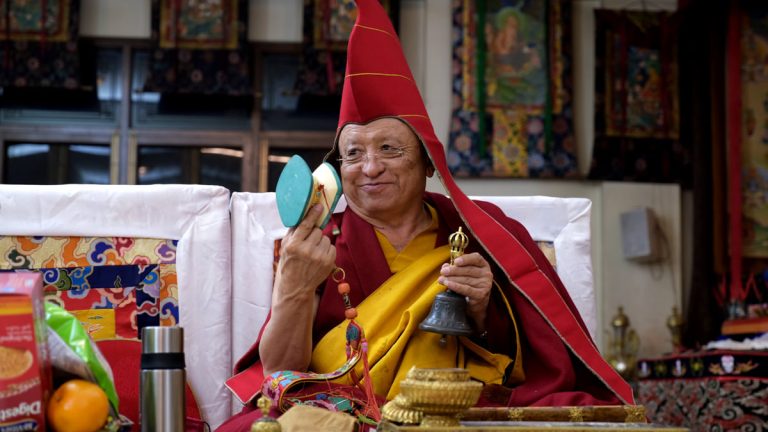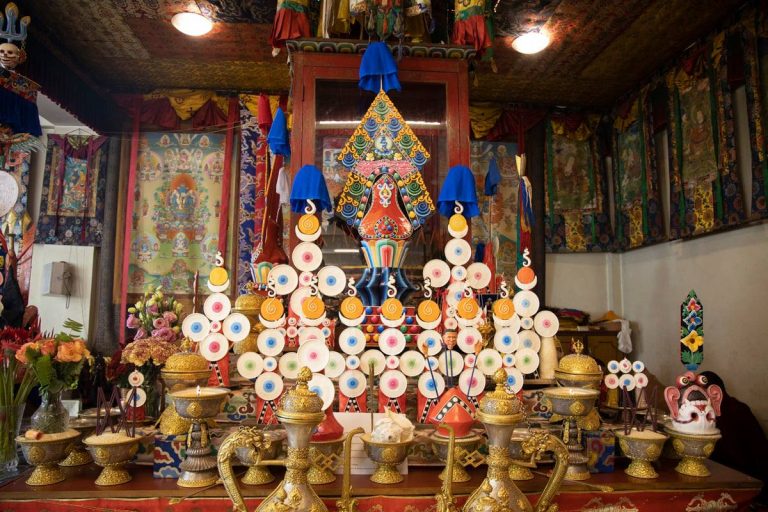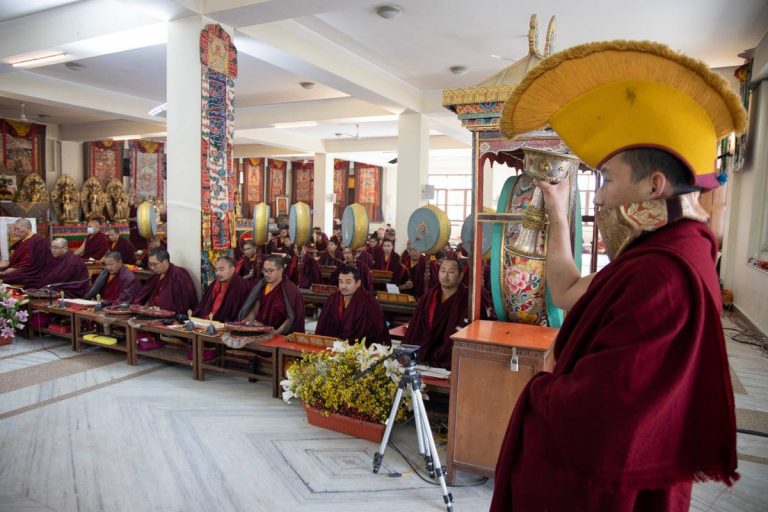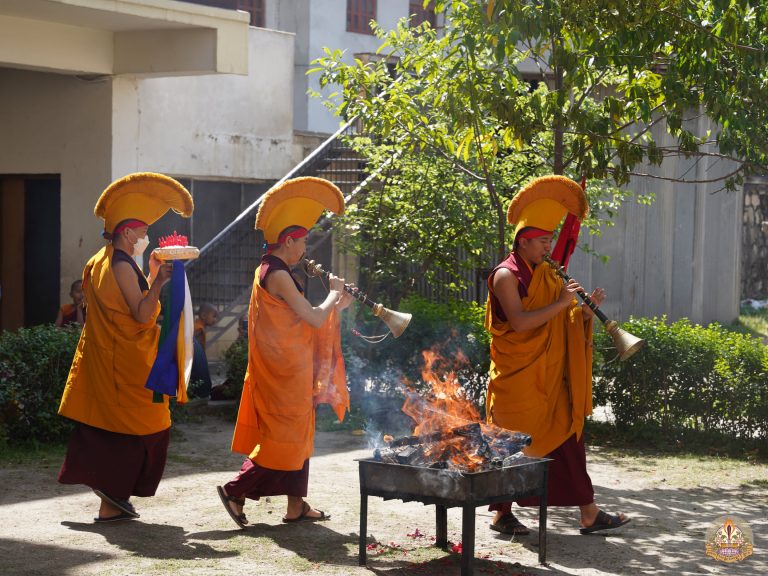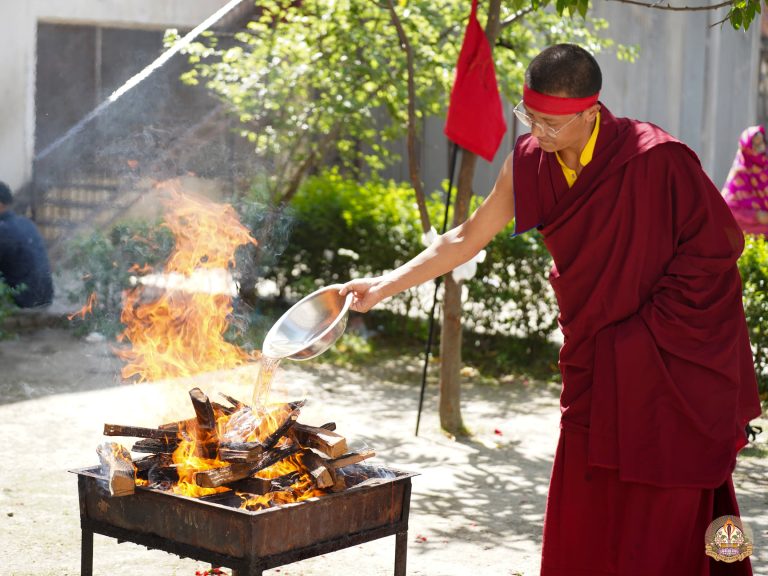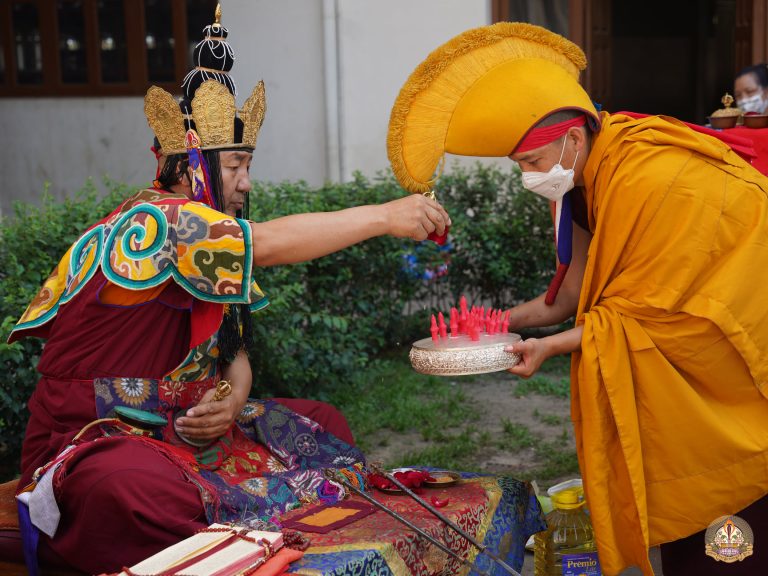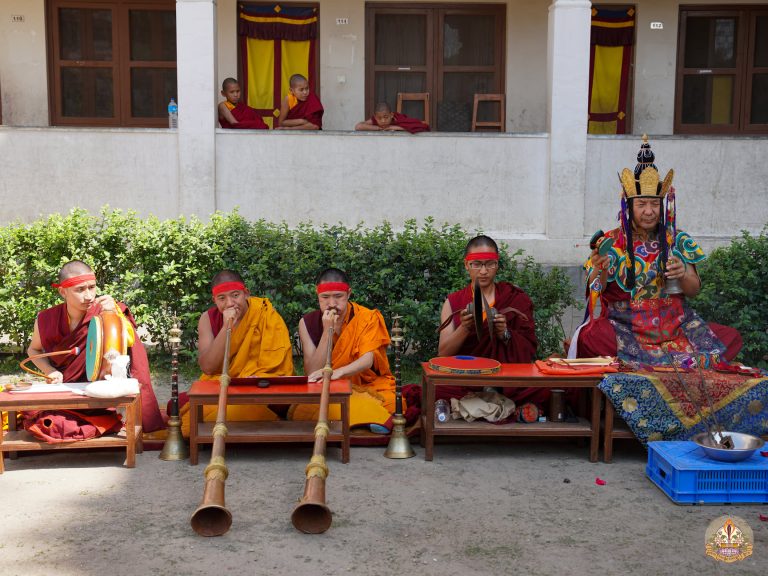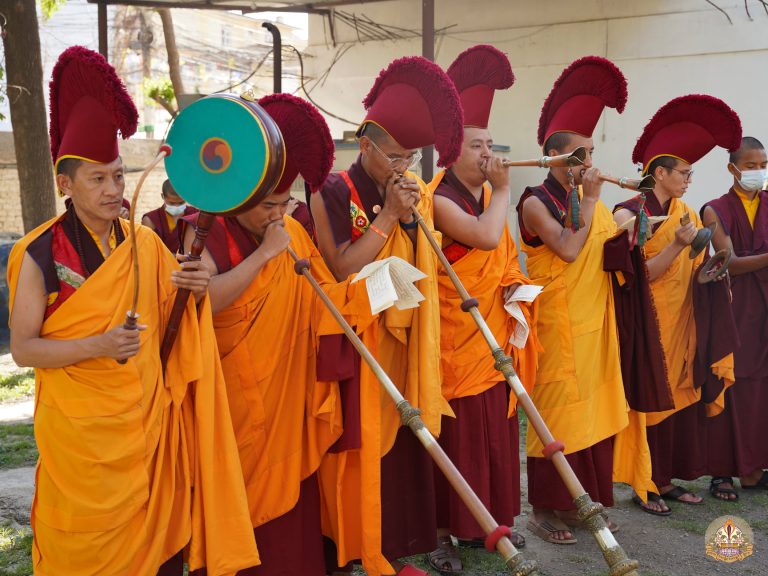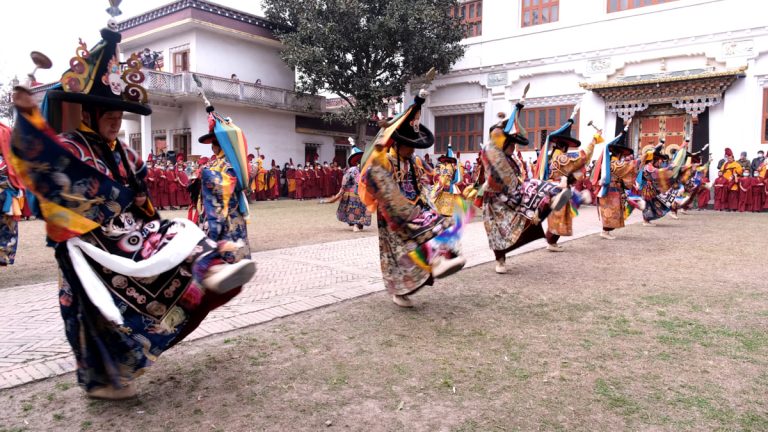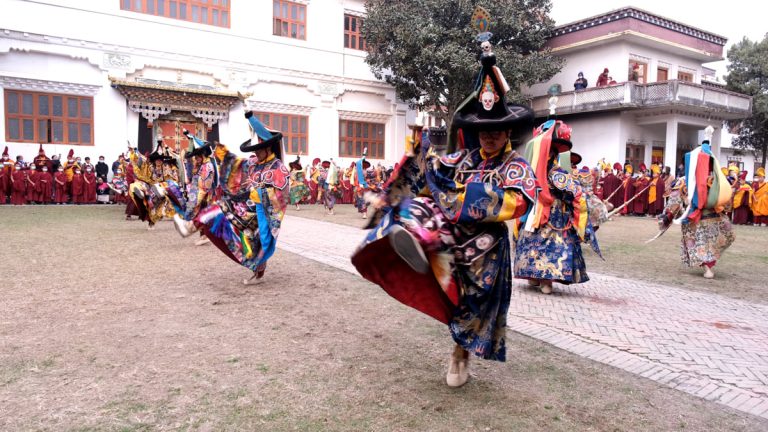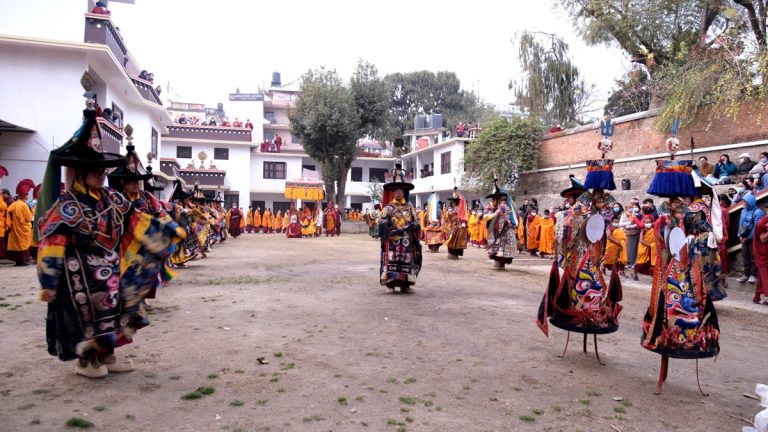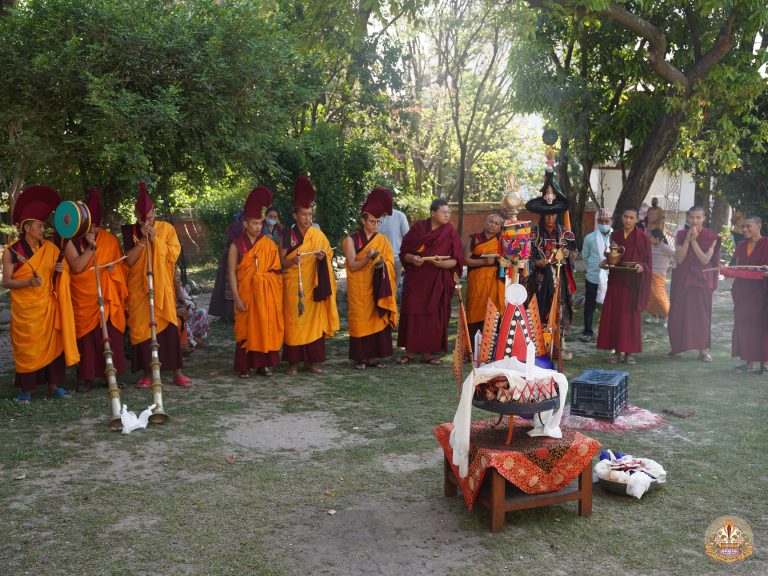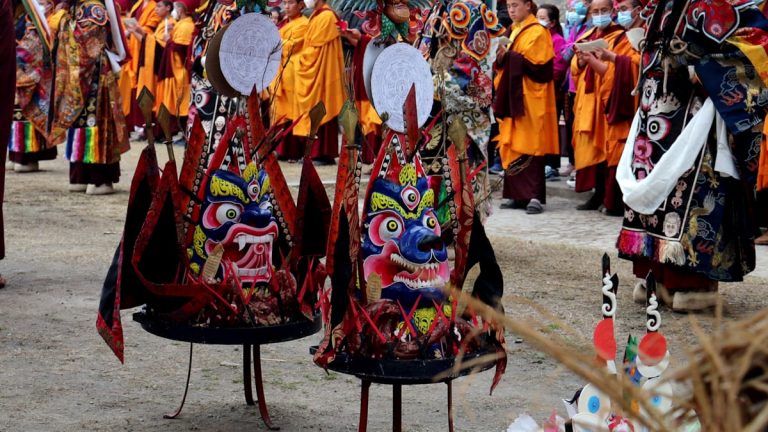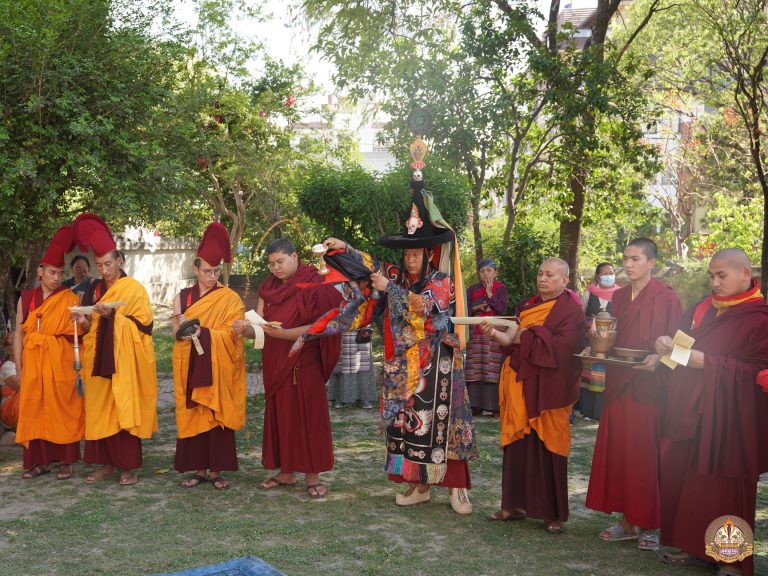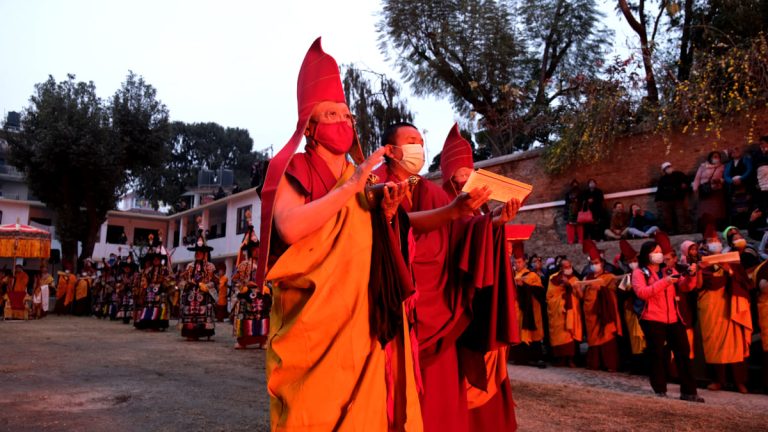In the Himalayan region, there are 2 traditions of celebrating Losar (New Year) one month apart from each other. Sonam Losar is celebrated primarily by the Tamang and Hyolmo people and Gyalpo Losar is celebrated primarily by the Tibetan, Sherpa, and Bhutia people.
Each year on the 23rd to 29th days of the last month of the Tibetan lunar calendar (February 2nd – 8th, 2024), the monks perform the Vajrakilaya (Gutor) Pūjā and Lama Dances at the monastery. The pūjā is performed to mend broken vows, purify spiritual pollution accumulated in the past year, and remove negative energy, bad luck, and all obstacles in order to clear the way for a New Year filled with positivity, happiness, good health, prosperity, peace, and auspiciousness.
Gutor Pūjā is an intensive Vajrayana practice that evokes the blessings of the mighty deity Vajrakilaya. Vajrakilaya is a wrathful form of Vajrasattva and embodies the enlightened activity of all the Buddhas. The practice is famous for being the most powerful for removing obstacles, destroying the forces hostile to compassion, and purifying negative karma.
The pūjā will be led by the monastery’s abbot, H.E. Chokyi Nyima Rinpoche, and its vajra master, Kyabgön Phakchok Rinpoche.
The focus of the first 4 days is on the higher activity of accomplishing enlightenment:
On first day, the main focus is on The Preliminaries of The Eleven Blessings: three doors, purifying water, vajra & bell, garland, signaling act, dagger, food & drinks, offering drum, and so forth. These offering substances become completely saturated with blessings and are supports to the practice.
On the second day, the focus is on The Main Body and Recitation: generation of the Mandala and its deities together with a series of recitations through approach, accomplishment, and activities.
On the third day, the focus is on The Dog-Faced Protector Deity of Vajrakilaya joining with the entire ocean of oath-bound protectors of the Buddha dharma for all enlightened activities.
On the fourth day, the focus is on The Rituals of Ched, Ten, and Dro during which offerings and praises are presented to the twelve protectors of Tibet, their entourages, and protector deities. There is also the subjugation of samaya-violators and the dance of four activities by Hayagriva.
The focus of the last 3 days is on the lower activity of liberating enemies and obstructers:
On the fifth day, the focus is on The Offerings of Torma, Amrita, and Rakta. There is a display of the Torma endowed with the four consciousnesses, the Amrita Medicine that purifies the five poisons, and Rakta which cuts the root of Samsara.
On the sixth day, the focus is on The Accumulation. The method and wisdom of Secret Mantra are fully blessed and a host of Madanla deities are invoked and offerings are made. The confession for the breach of Samaya is made and Samaya is mended. The demons of ego-clinging are liberated into the space of non-duality and offerings are made.
On the 7th day, the focus is on The Cham Dances and the Siddhi of Tossing Torma. The morning Cham dances are Sadul, Kengchen Yabyum Shi, Shayak Cha Nyi, and Gomoshi; and the afternoon dances are Delcham, Shawai Garcham, and Sechok Nyerchik. The dances depict scenes of Gods and Demons that make people aware of the results of one’s good and evil deeds. Attending the Cham dances is thought to benefit the audience with good fortune, longevity, and good luck.
The dances conclude with the ceremonial burning of an effigy in a haystack which symbolizes turning one’s back on one’s own destructive habitual patterns and the resulting harmful circumstances. A red Torma is thrown into the haystack and all outer, inner, and secret obstacles are burned and auspiciousness is installed by bringing in the supreme and common siddhis.
The ceremony is attended by hundreds of viewers from near and far, consisting of monks and nuns, lay practitioners, and benefactors who pray for the wellbeing and prosperity of all sentient beings.
Make an offering CLOSED NOW FOR OFFERINGS AND NAMES
If you are unable to make an offering but would like to be included in the Vajrakilaya Pūjā and Lama Dances (Gutor Pūjā) the monks will perform at Ka-Nying Shedrub Ling Monastery on February 2nd – 8th, 2024), please send your name(s) to [email protected].
